Custom-fitted 3D stent gives patients route to easier breathing
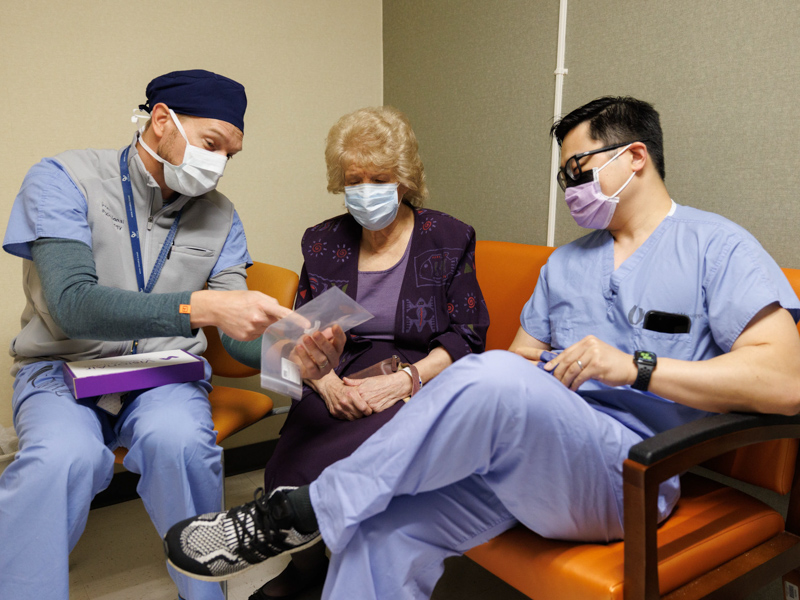
Severe narrowing of an area near her lungs left Elizabeth King gasping after taking a few steps or standing in the kitchen.
For her son Rodney King’s birthday earlier this year, “I made him a pound cake, and I got out of breath,” King said.
The Lucedale resident is getting relief and breathing easier now thanks to a novel treatment only offered in state at the University of Mississippi Medical Center. It calls for placement of a silicone stent, made on a 3D printer, that sits snugly in the split that divides her left main bronchus to the upper and lower bronchi of her left lung that carry air to her lungs.
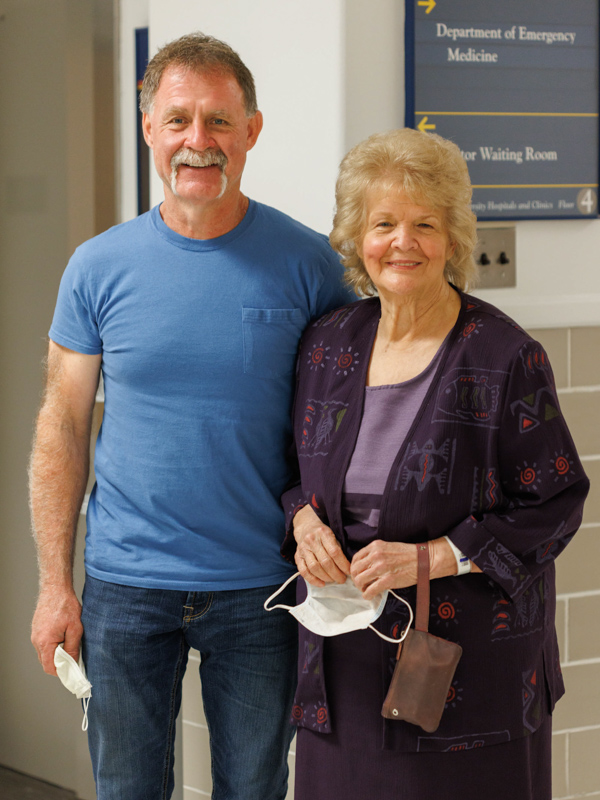
The pulmonary team of Dr. Michal Senitko, assistant professor of medicine and surgery and section chief of interventional pulmonology; Dr. Yanglin Guo, a pulmonologist and assistant professor of medicine; and Dr. George Abraham, a professor of medicine, installed the stent April 20 to open up King’s airway after traditional stents wouldn’t stay in place.
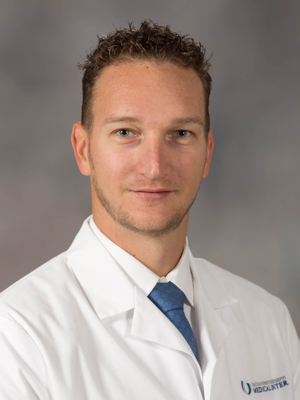
What made the silicone stent different is that it’s designed and sized exclusively for King “based on her CT scans and using special software,” Senitko said.
Because it’s custom made, Guo said, the chance of it moving out of place is greatly lessened.
The outpatient procedure takes about an hour, and patients go home the same day. King returned to the Medical Center May 27 for a follow-up bronchoscopy that confirmed her stent is sitting where it should be, making it possible for her breathing to significantly improve.
King, a longtime minister in her community, said she started having problems breathing about 18 months ago. After taking a trip and driving home through Georgia, she said, she developed stomach pain and then pneumonia in both lungs.
“My doctor at home treated me and found a hernia as big as a football,” King said. “It was pressing on the lobe of my lung.”
She was referred to UMMC, where she was hospitalized in March. Her shortness of breath worsened, and her UMMC pulmonology team pinpointed the problem.
A person’s bronchi carry air to the lungs. Air passes from the mouth into the trachea, which divides into the left and right bronchi. The air moves through the bronchi and into small sacs in the lungs called alveoli.
In King’s case, a section of scar tissue at the split between the left and right bronchi made the split narrow. “It keeps closing up, so she’s had recurring pneumonia,” Senitko said. Standard airway stents, which come in a limited number of sizes, are generally produced for larger airways and rarely are a perfect fit.
Those stents can kink, bend or migrate in the airway, and granulation tissue growth can complicate those problems.
King was a candidate for the custom silicone stent approved by the Federal Drug Administration in 2020 and designed by a Cleveland Clinic physician. Using CT scans and 3D visualization software, a mold for a custom stent is printed on a 3D printer, then injected with medical grade silicone. The process allows for a perfect or near-perfect fit for the patient.
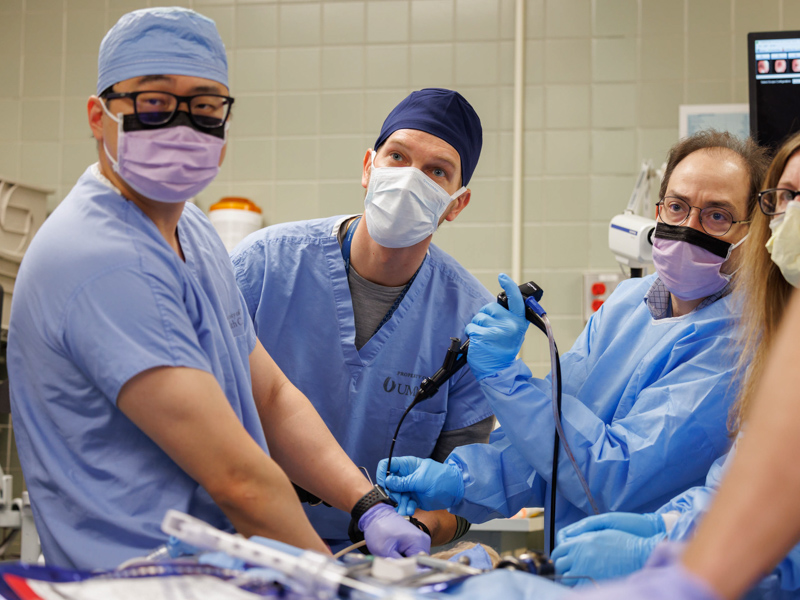
“Breathing is something many people take for granted, but for many of these patients, every breath can be a struggle. It’s been gratifying to see patients receiving the customized stents feeling relief right away,” Dr. Tom Gildea, the stent’s developer, said in a Cleveland Clinic news release.
“We are excited to be able to bring this technology to more patients across the country, and grateful for the patients and donors who have worked with us to help pioneer this technology,” said Gildea, the Cleveland Clinic’s section head of bronchoscopy.
Before King began her procedure, Senitko and Guo showed her the silicone stent and explained how it works. “This is what we had created for you,” Senitko said. “You can touch it.
“The split will anchor it in your airway so that it won’t migrate,” he said. “This stent doesn’t have a straight shape. Our airways are a little curvy. This is custom made to fit you.”
Retiree David Young of Jackson has been fitted for one of the custom stents and looks forward to it being placed in coming weeks. Senitko’s team came up with a temporary solution by sewing together two stents and placing them in Young’s airway while a custom one was being made. Like King, Young has developed scar tissue in his left main bronchus and needs a permanent stent.
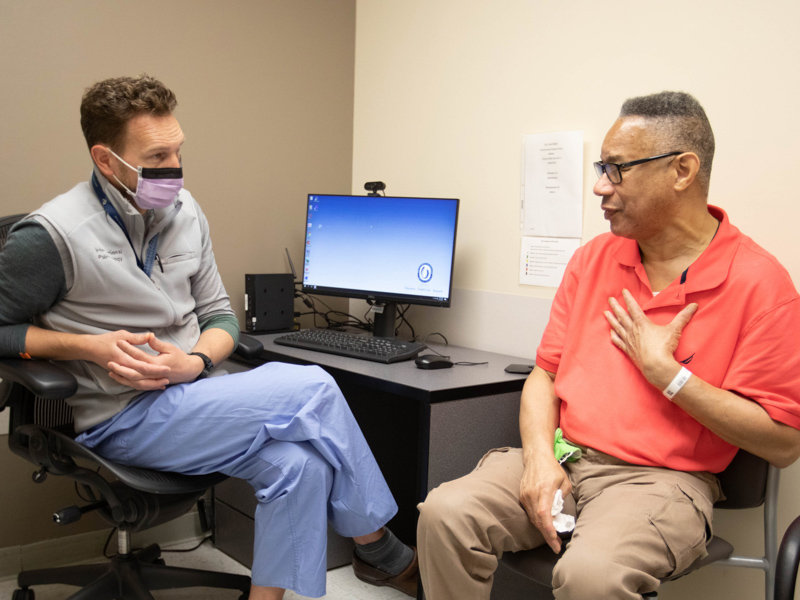
“Sometimes my breathing is a lot worse, and I might have to do more breathing treatments than I usually do,” said Young, who can’t enjoy playing basketball like he used to because he gets winded. “They said the 3D stent will do a better job than the one I have, so I’m waiting for it.”
“We will use your CT scan to build a stent that will exactly fit your pipes. That should lessen the number of bronchoscopies you have to undergo every three months to revise the current stent,” Senitko told him.
King also has needed breathing treatments to ease her condition. “We won’t have to do that as often,” Senitko told her. “This stent will stay there forever.”
Rodney King, said his mom’s condition “hasn’t slowed her down. She just needs help breathing.”
In the weeks following her surgery, Elizabeth King is regaining strength and quality of life. Before placement of the silicone stent, she said, her church singing “wasn’t up to par.”
The weekend after her surgery, King sang with the congregation at Living Waters Tabernacle.
“I want to go about my business,” she said.


